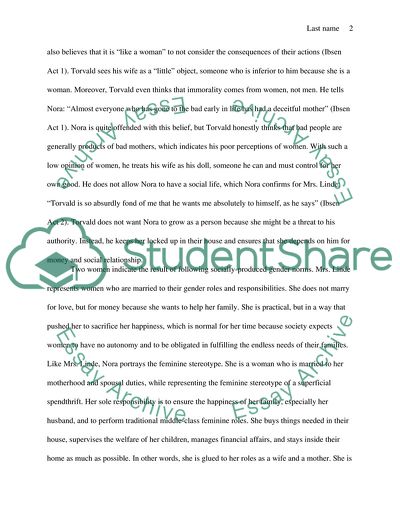Marriage as Entrapment for Men and Women in A Dolls House by Ibsen Book Report/Review Example | Topics and Well Written Essays - 1750 words. https://studentshare.org/literature/1802818-a-dolls-house
Marriage As Entrapment for Men and Women in A Dolls House by Ibsen Book Report/Review Example | Topics and Well Written Essays - 1750 Words. https://studentshare.org/literature/1802818-a-dolls-house.


